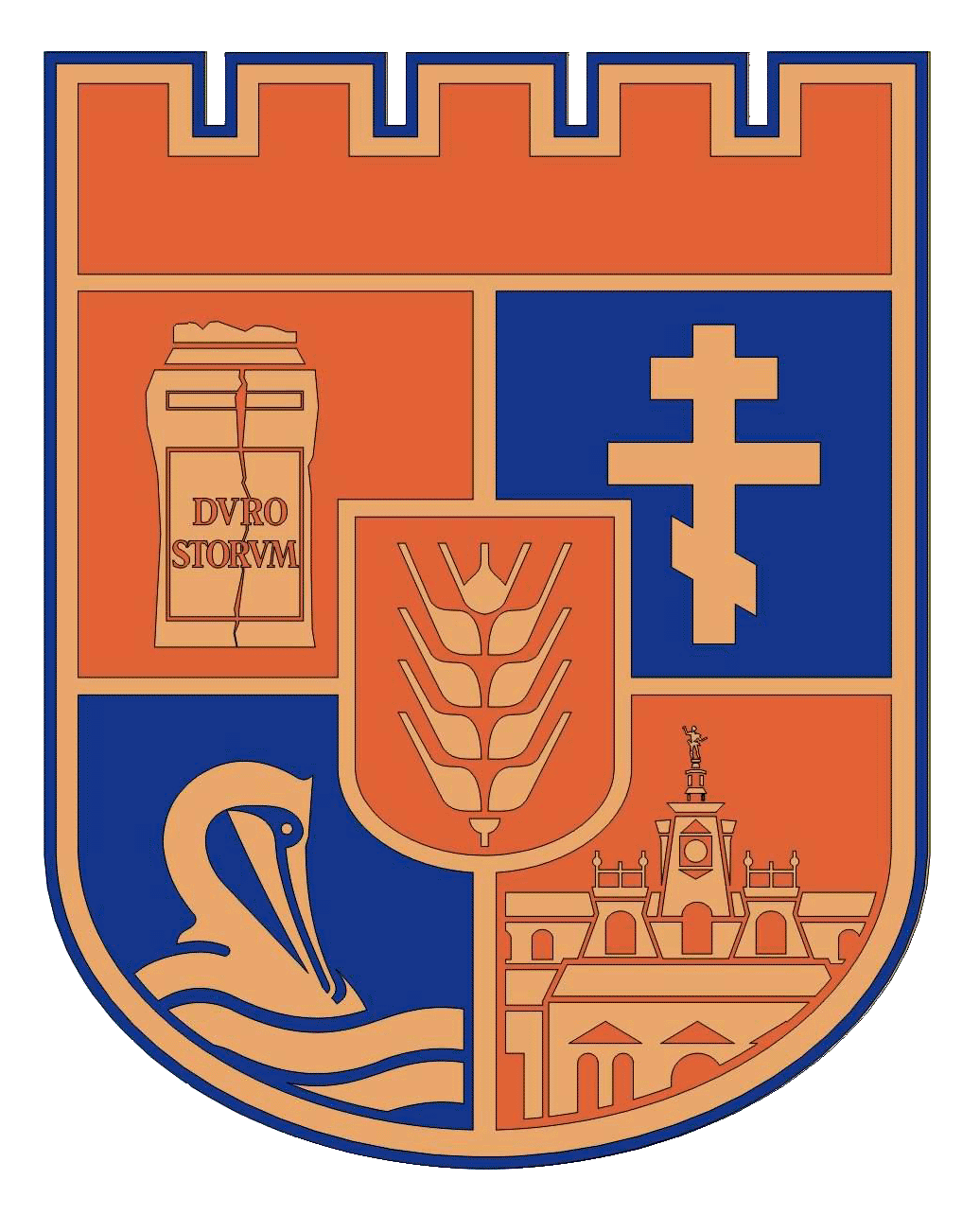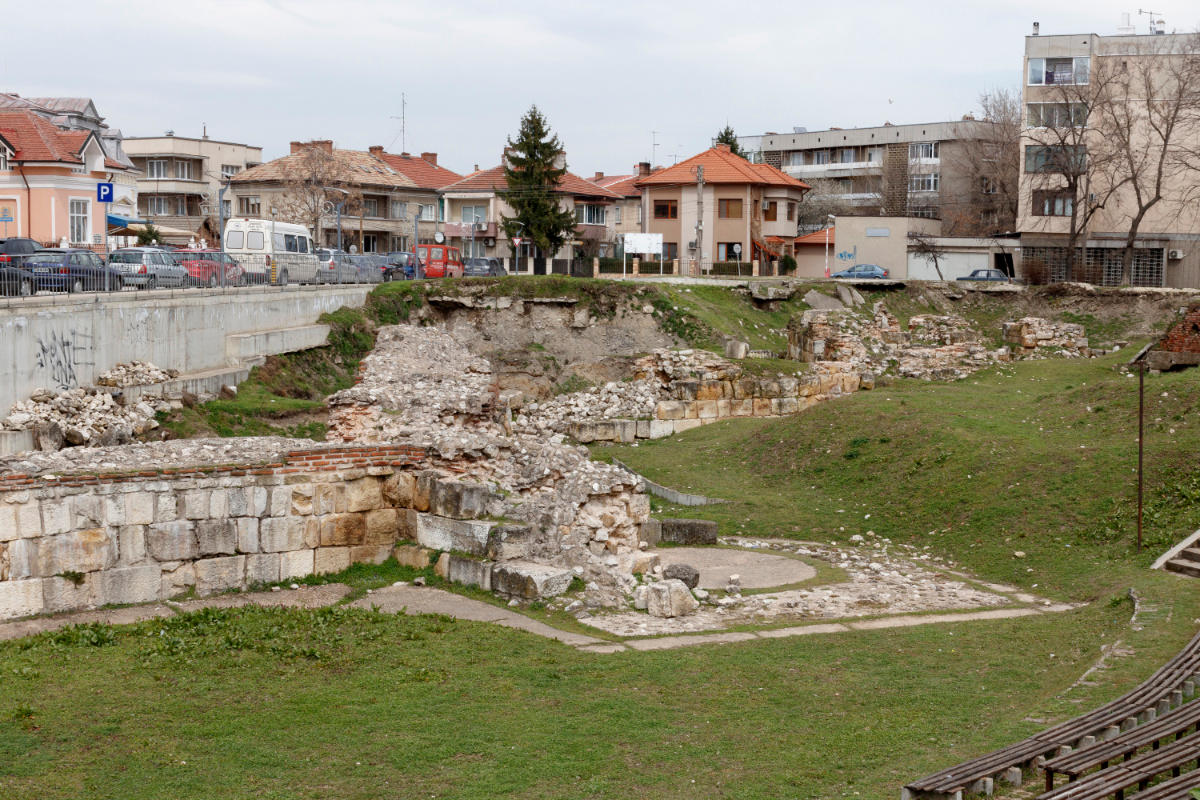Southern fortress wall and gate of Durostorum Drustar
Category CastleSITE
Southern fortress wall and gate of Durostorum Drustar
LOCATION
The Southern fortress wall and the gate of Durostorum Drustar is located in the center of Silistra. It is 429 km away from the capital Sofia. There is a bus three times a day leaving from the Sofia Central Bus Station to Silistra, as well as a train three times a day from the Sofia Central Railway Station.
DESCRIPTION
The southern fortress wall is the best preserved passage from the fortress system of the Durostorum-Drustar citadel, which is still visible behind the town square. It was discovered during archaeological excavations in 1986-1987 and 2007-2012.
Drastar is the medieval name of the present town of Silistra. The city emerged on the foundations of the ancient ancient city of Durostorum. The Early Byzantine fortification facility Durostorum became the nucleus of the medieval town of Drastar. After the conversion of the Bulgarians, it became the seat of the Bulgarian Orthodox Church, and during the Second Bulgarian Kingdom it was a metropolitan center. The city had two fortress walls - North and South.
HISTORY
The construction of the Durostorum-Dorostol-Drastar citadel, or the south wall of the fortress, dates back to the beginning of the 6th century.
The southern fortress wall is one of the most impressive military defense facilities in Bulgaria since the Antiquity and the Middle Ages. It was built during the reign of Emperors Diocletian and Constantine the Great in the beginning of the 4th century and restored by Emperor Justinian the Great (527-565) as a fortification without analogue through Late Antiquity. It is a powerful polygonal citadel, measuring 350 x 240 m, with 3,60 - 4,20 m thick walls, with two gates and over 12 m high pentagonal and triangular towers. This fortress, destroyed by Slavs and Proto-Bulgarians in the 7th century , was restored by Khan Omurtag (814-831) and used as the citadel of the city without interruption until the beginning of the 19th century.[1]
40 meters from the south fortress wall with four towers have been revealed. Two of them - round and triangular - are preserved only at their base. The wall is 3.60m thick. The bases are 3.80 and 3.90 meters wide and 3m deep. They are built of small and medium-sized lobes and roughly carved stones, horizontal and connected with a solution of lime, river coarse sand and crushed construction ceramics.
Archaeological studies indicate that the fortress of the 6th-7th centuries, without drastic changes, was restored and re-used for its intended purpose in the 9th-15th centuries. The wall with the central gate has witnessed spectacular political events and impressive historical figures have passed through it. In 681, the triumphant Bulgarian army of Khan Asparuh appeared before it, and after the beginning of the 9th century it was restored by Khan Omurtag. Behind this wall in 896 Tsar Simeon the Great kept the Bulgarian army and undertook the victorious counter-attack against the Magyars. Several decades later, two of the most remarkable rulers of medieval Europe - the Byzantine Emperor John Tzimiskes and the Russian-Viking Knyaz Svetoslav - met at the same place. It was in this place that in 1088 the Byzantine Emperor Alexius Komnin lost to the collective forces of Pechenegs and Bulgarians. Through this gate around 1180 the Asen and Peter brothers restored the Bulgarian power in Drustar. From here, in 1299, the Drustur despot Theodore Svetoslav went to Turnovo, where he was crowned as a Bulgarian Tsar. At last this fortress became the capital of an independent feudal state at the end of the 14th century, ruled by Despot Ivanko Terter. The mighty fortification was conquered by the Turks in 1383 and was the main unit of the fortification of Silistra in the Ottoman times. It was destroyed only in 1810 by the famous Russian prince Bagration - a hero in the battle of Borodino against Napoleon Bonaparte.
The terrain is not specifically strengthened prior to the building. For the towers, the first consecutive row is shaped as a plinth of up to 1.90 m. quadras aligned in length and across. They are followed by three well aligned horizontal lines and the same alignment system. The wall was built between the towers in the same way with the exception of a pedestal. Some places are filled with fragments of building ceramics and red mortar.
The construction is very solid but not very precise, largely due to the use of heterogeneous building material taken from older buildings. There are no traces of brick construction, in the rest of the fortress, and nowhere more than three bricks are preserved in a single plank of superstructure.
The reconstruction and upgrading of the destroyed fortress walls was carried out much later, probably in the first half of the IX century, when the Bulgarian society advancing in its socio-economic development was able to undertake monumental constructions and the state needed strong support points on the Danube.[2]
SITE SIGNIFICANCE
The southern fortress wall is one of the most impressive military defense facilities in Bulgaria since Antiquity and the Middle Ages and it has no analogue among the ancient and medieval fortifications.
VISITOR INFORMATION
The facility is open and is free to visit.
OTHER INFORMATION
Old Bulgarian ceramics in this cultural layer testifiy that Slavs and Proto-Bulgarians settled on the ruins of the abandoned Dorostol. During the invasions of the 6th-7th centuries, Dorostol's population was indeed fleeing the city. In Varna the Dorostolian bishop Dulkisimos’ tombstone has been found. He had found shelter and eventually died in the city of Odessos. In the Ancona cathedral in Italy the relics of St. Dazii have been preserved. There is an inscription on his sarcophagus that it was brought from Dorostol. It appears, the fleeing Dorostol inhabitants carried with themselves the city's treasures, which were never returned, because the old population did not return.
G. Atanassov. Roman-Byzantine castle of Durostorum-Dorostol on the Danube bank in Silistra. - Archeology, 1, 2013, pp. 52-70.
G. Atanassov. The fortress of Durostorum-Dorostor-Drastar on the Danube shore in Silistra. Silistra, 2013.
G. Atanasov, N. Russev. The fortress walls of Dorostol/Drustrur VI-X c. - Stratum plus, 6, 2014, pp. 239-241.
G. Atanasov. Durostorum - Dorostol - Drastar - Silistra. The Danubian Fortress (4th - 19th c.). - In: Corpus of Ancient and Medieval Settlements in Bulgaria, Vol. 2, Sofia, 2013, p. 493-587
SITE CLASSIFICATION
Archaeological site
[1] Museumsilistra.com <<http://www.museumsilistra.com/index.php/yuzhna-krepostna-stena>>
[2] Vestnikstroitel.bg <<vestnikstroitel.bg/archive/24662_строителството-в-древна-силистра/>> (24.04.2018)




